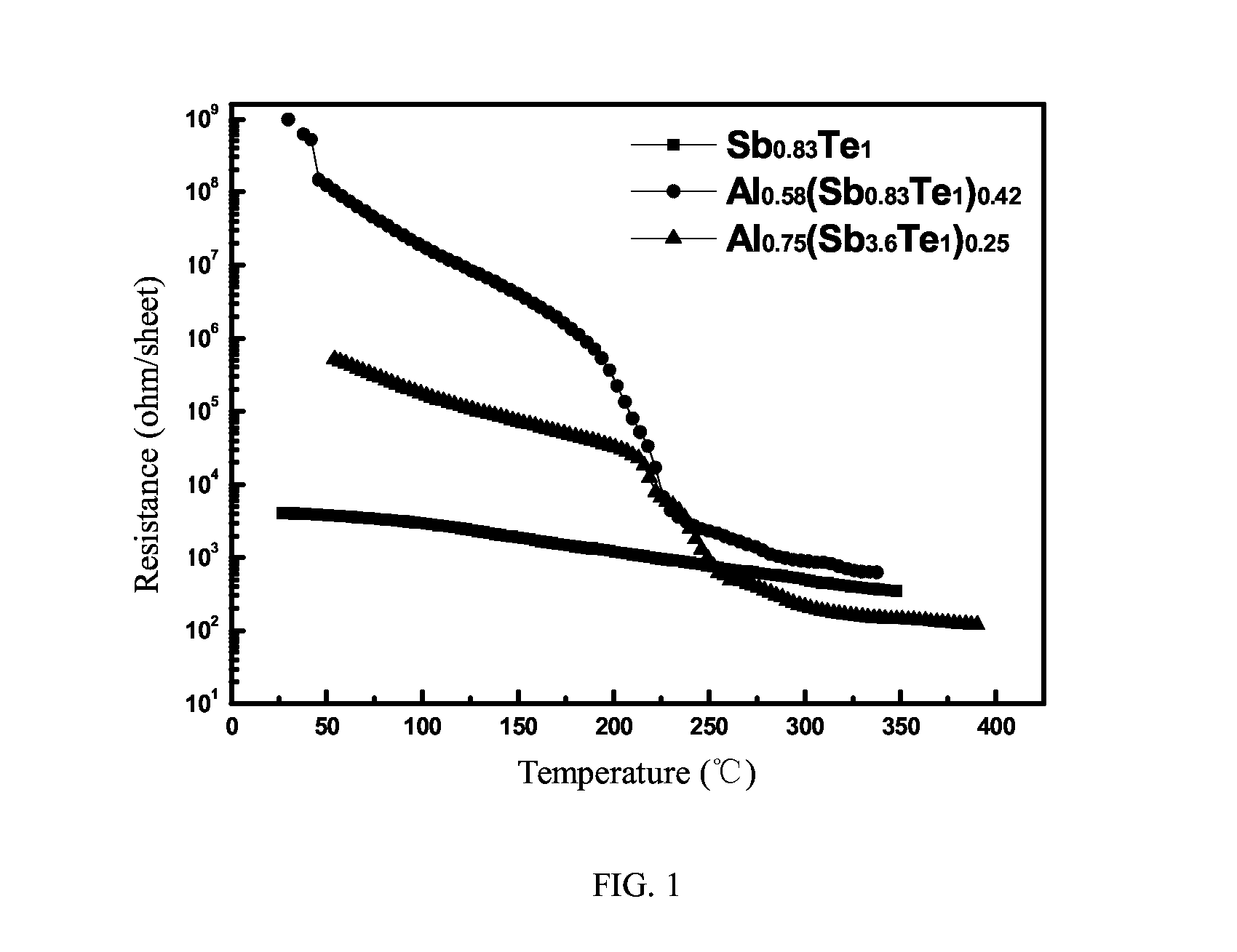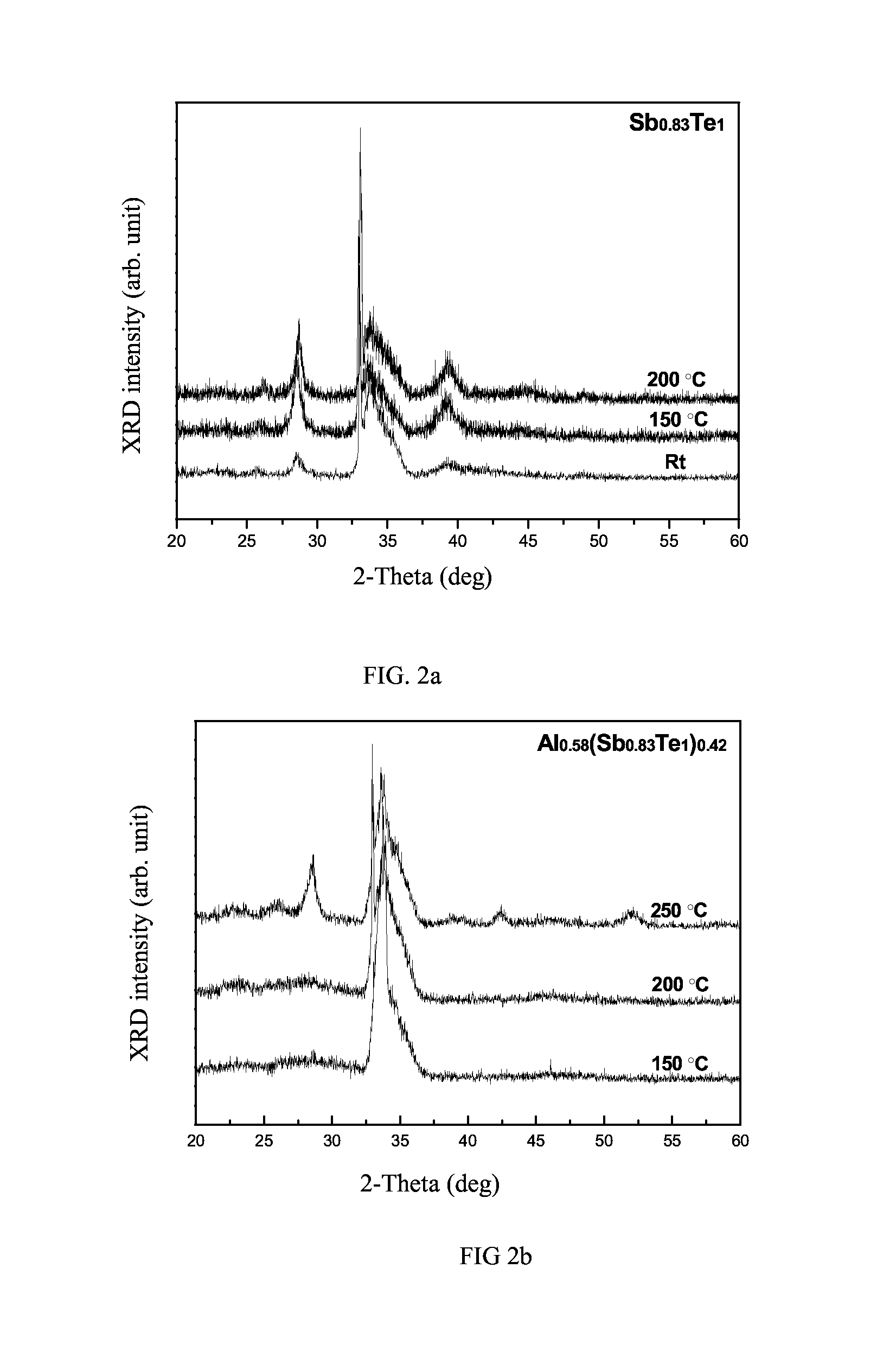Al-Sb-Te phase change material used for phase change memory and fabrication method thereof
a phase change memory and phase change technology, applied in the direction of instruments, non-metal conductors, conductors, etc., can solve the problems of flash technology encountering bottlenecks, low speed, and more highlighted technical weaknesses, and achieve high crystallization speed, good thermal stability, and low power consumption
- Summary
- Abstract
- Description
- Claims
- Application Information
AI Technical Summary
Benefits of technology
Problems solved by technology
Method used
Image
Examples
embodiment 1
[0023]The technical scheme of the present invention is further detailed by the preparation of Alx(SbyTe1)1-x phase change material and the test thereof in this embodiment. Detailed preparation method is described as follow:[0024](1) Prepare Al—Sb—Te thin film on regular silicon substrate and thermally oxidized silicon substrate simultaneously by magnetron co-sputtering with two targets, wherein a base vacuum level is 1.8×10−4 Pa and a sputtering argon pressure is 0.21 Pa. Film materials with three compositions are prepared under the conditions mentioned above, wherein the parameters of each composition is shown in the table below:
[0025]
Film growthRateArtime (min) Film(nm / Source power(sccm)thickness(nm)Compositionmin)Sb0.83Te1 -RF20w2030 / 120Sb0.83Te14Al-DC15w2030 / 150Al0.585Sb0.83Te1 -RF20w(Sb0.83Te1)0.42Al-DC15w2030 / 210Al0.757Sb0.83Te1 -RF20w(Sb3.6Te1)0.25Sb- RF20w[0026](2) The resistance of the as-deposited Alx(SbyTe1)1-x film grown on the oxidized silicon substrate is in situ measu...
PUM
| Property | Measurement | Unit |
|---|---|---|
| crystallization temperature | aaaaa | aaaaa |
| crystallization temperature | aaaaa | aaaaa |
| semiconductor | aaaaa | aaaaa |
Abstract
Description
Claims
Application Information
 Login to View More
Login to View More - R&D
- Intellectual Property
- Life Sciences
- Materials
- Tech Scout
- Unparalleled Data Quality
- Higher Quality Content
- 60% Fewer Hallucinations
Browse by: Latest US Patents, China's latest patents, Technical Efficacy Thesaurus, Application Domain, Technology Topic, Popular Technical Reports.
© 2025 PatSnap. All rights reserved.Legal|Privacy policy|Modern Slavery Act Transparency Statement|Sitemap|About US| Contact US: help@patsnap.com


